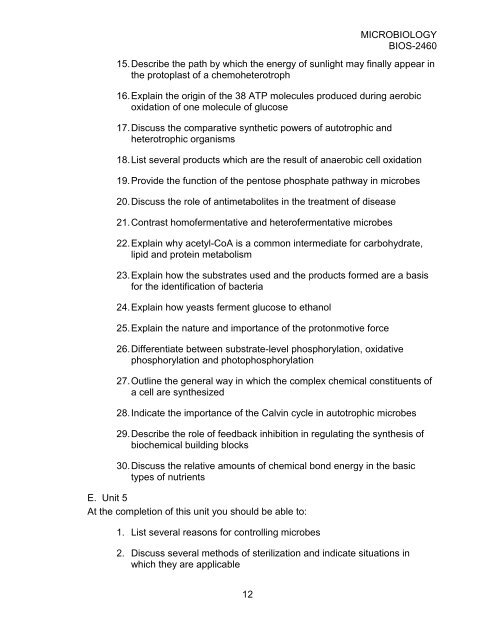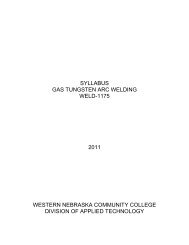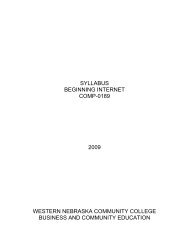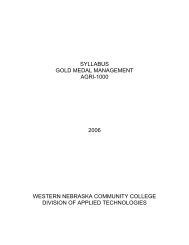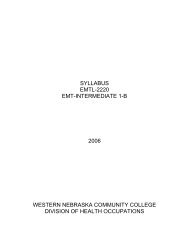View Current Syllabus - MY WNCC Portal Login
View Current Syllabus - MY WNCC Portal Login
View Current Syllabus - MY WNCC Portal Login
Create successful ePaper yourself
Turn your PDF publications into a flip-book with our unique Google optimized e-Paper software.
MICROBIOLOGYBIOS-246015. Describe the path by which the energy of sunlight may finally appear inthe protoplast of a chemoheterotroph16. Explain the origin of the 38 ATP molecules produced during aerobicoxidation of one molecule of glucose17. Discuss the comparative synthetic powers of autotrophic andheterotrophic organisms18. List several products which are the result of anaerobic cell oxidation19. Provide the function of the pentose phosphate pathway in microbes20. Discuss the role of antimetabolites in the treatment of disease21. Contrast homofermentative and heterofermentative microbes22. Explain why acetyl-CoA is a common intermediate for carbohydrate,lipid and protein metabolism23. Explain how the substrates used and the products formed are a basisfor the identification of bacteria24. Explain how yeasts ferment glucose to ethanol25. Explain the nature and importance of the protonmotive force26. Differentiate between substrate-level phosphorylation, oxidativephosphorylation and photophosphorylation27. Outline the general way in which the complex chemical constituents ofa cell are synthesized28. Indicate the importance of the Calvin cycle in autotrophic microbes29. Describe the role of feedback inhibition in regulating the synthesis ofbiochemical building blocks30. Discuss the relative amounts of chemical bond energy in the basictypes of nutrientsE. Unit 5At the completion of this unit you should be able to:1. List several reasons for controlling microbes2. Discuss several methods of sterilization and indicate situations inwhich they are applicable12


